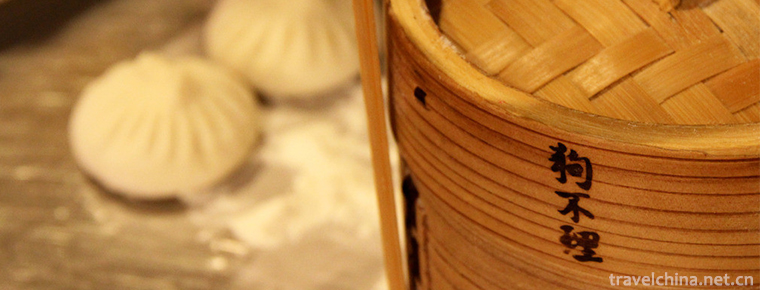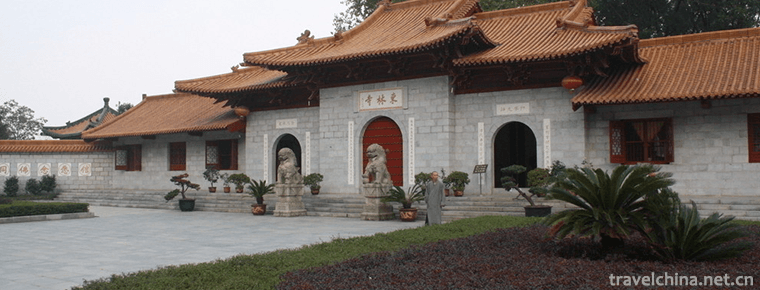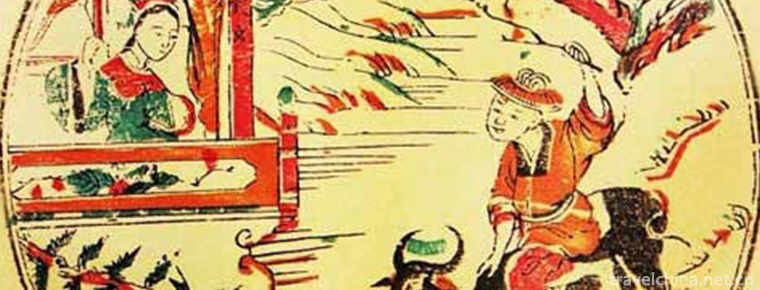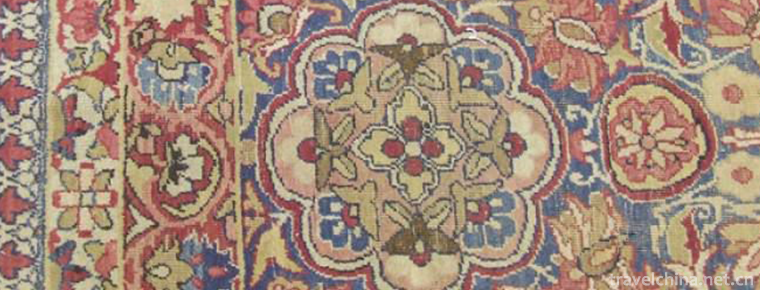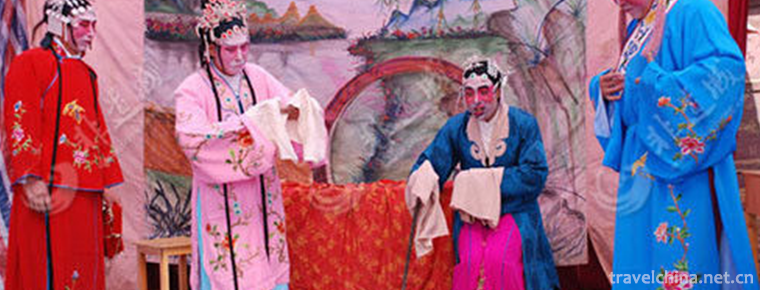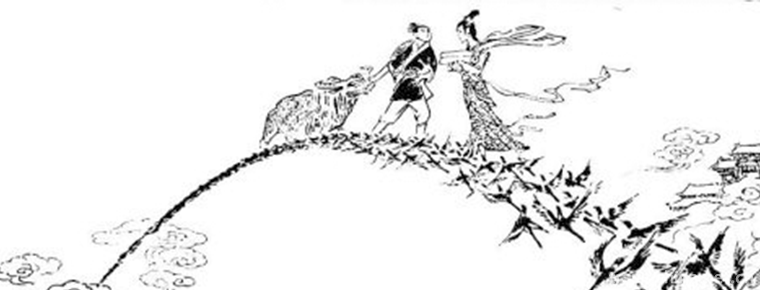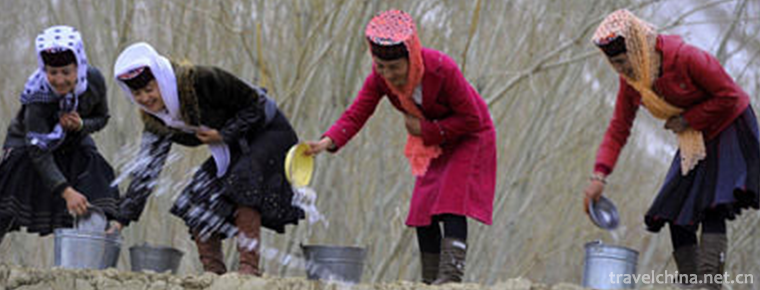Shanghai
Shanghai, referred to as "Shanghai" or "Shen" for short, is the birthplace of the Communist Party of China. It is a municipality directly under the Central Government of the People's Republic of China, a national central city, a mega-city, a core city in the Yongdawan District of Shanghai and Hangzhou, an international center of economic, financial, trade, shipping, scientific and technological innovation, and the first batch of coastal open cities. Shanghai is located in the Yangtze River Estuary, the leading city of the Yangtze River economic belt, and the core city of G60 science innovation corridor. Across the East China Sea lies Kyushu Island, Japan, Hangzhou Bay to the south, and Jiangsu and Zhejiang to the north and west.
In the spring and Autumn period and the Warring States period, Shanghai was the seal city of Chunsheng, Chun Shen, Chu. During the Jin Dynasty in the 4th and 5th centuries, because fishermen created "Hu" fishing tools and the river flowed into the sea called "Malfeasance", the lower reaches of the Songjiang River were called "Hu" and later changed to "Hu", so Shanghai was called "Hu" for short. The Tang Dynasty was set up in Huating county. Shanghai is a famous historical and cultural city in China. The culture of Jiangsu, Zhejiang, Wuyue and the industrial culture introduced from the West merge into a unique Shanghai culture. After 1843, Shanghai became an open commercial port and rapidly developed into the largest city in the Far East.
Shanghai has a total area of 6340 square kilometers, and has jurisdiction over 16 municipal districts. It belongs to the subtropical humid monsoon climate. Shanghai GDP ranks first in Chinese cities, second in Asian cities, second only to Tokyo, Japan. Shanghai is a world-famous financial center with the largest population scale and the largest metropolitan area in the world. Shanghai was named the world's first tier city by GaWC. Shanghai's total household deposits and per capita household deposits all rank second in the country. In 2017, the total number of high-tech enterprises in Shanghai reached 7,642, ranking No. 1 in Forbes'2017 "Best Commercial City List in Mainland China".
Container throughput of Shanghai Port ranks first in the world. It has the first free trade zone of China (Shanghai) in mainland China. Shanghai, together with Anhui, Jiangsu and Zhejiang, forms the Yangtze River Delta urban agglomeration and is one of the six major urban agglomerations in the world.
Shanghai is the kingdom of Wu in the spring and Autumn period. The Warring States period belonged to the Yue State and Chu state.
After Qin and Han Dynasties, they belonged to Kuai Ji county and Wu County. They belonged to Haiyan, Jiquan and Lou county.
In the 10th year of Tang Tianbao (751), Huating County was set up by Wu County Taixun, and Shanghai began to have relatively independent administrative divisions. Huating County is situated about south of Wusong River in Shanghai and west of Chuansha-Huinan-Datuan Line.
In the Northern Song Dynasty, the mainland of Shanghai belonged to Huating county and Kunshan County, and Chongming area belonged to Haimen county.
Song Xining set up Shanghai affairs in ten years (1077).
Jiading County was established on the 9th of December (January 7, 1218) in the Southern Song Dynasty. There were two independent administrative divisions in Shanghai.
From the Yuan Dynasty to the fourteenth year of the Yuan Dynasty (1277), Huating County was upgraded to a prefecture, and the following year it was renamed Songjiang prefecture, still under the jurisdiction of Huating County.
To twenty-nine yuan (1292), Shanghai County, under the jurisdiction of the Songjiang government. Shanghai County covers an area of about 2,000 square kilometers. It is now located in the urban area south of the old Wusong River, most of Qingpu County, most of Minhang District, most of Pudong New Area and Nanhui County.
In the late Yuan Dynasty, there were 2 counties in Songjiang and Jiading, Chongming and 2 counties in Huating and Shanghai in Shanghai.
At the end of Ming Dynasty, there were Songjiang Prefecture, Huating County, Shanghai County and Qingpu County, Jiading County and Chongming County of Suzhou Prefecture and Jinshanwei County.
Qing Yongzheng four years (1726), there are Songjiang Fu Huating (governance), Lou (and Huating share the city), Shanghai, Qingpu, Fengxian, Fuquan, Jinshan, Nanhui 8 counties, Taicang Jiading, Baoshan 2 counties.
In the ten years of Jiaqing (1805), the pattern of 10 counties and 1 hall was basically formed in Shanghai, including Huating, Shanghai, Qingpu, Lou, Fengxian, Jinshan, Nanhui, Fumin Hall of Chuansha, Jiading, Chongming and Baoshan counties in Taicang.
In the fifteenth year of Jiaqing (1810), it was reduced to 600 square kilometers. The county area is about south of Wusong River old road, most of Pudong New Area and most of Minhang District. The county seat is the area of Renmin Road and Zhonghua Road link.
Daoguang 23 years (1843) Shanghai opened a port, Daoguang 25 years in Shanghai County Pidgin north of the area is divided into foreigners'residence, after the formation of the British concession. In the past twenty-eight years, Daoguang has been classified as a US concession in the Hongkou area. In the past twenty-nine years, Daoguang took the northern part of Shanghai county and the southern part of the British concession as the French concession.
In the second year of Tongzhi (1863), the British and American concessions merged into the British and American public concessions. In the twenty-fifth year of Guangxu (1899), they were renamed the Shanghai International Public Concession. Since then, the concession has been expanded many times.
After the Opium War, when Shanghai opened its port, foreign ships went straight up from abroad. In 1845, the British colonists first demarcated the British Concession in the territory of Shanghai County; in 1849, French colonists demanded the delimitation of the French Concession; in 1863, the American Concession merged with the British Concession to form a public concession. Up to now, Shanghai is divided into different jurisdictions, the old gate (built in the Song Dynasty) and the new gate (built in the Qing Dynasty) north of the Suzhou River due to the influx of a large number of poor farmers, gradually rising, forming the northern city.
In 1810, the Qing government promulgated the Articles of Urban and Rural Autonomy. The southern border of Hecheng, the old gate, the new gate and the Jiangjingmiao area of Shanghai County were the city of Shanghai. Pusong Town, Dongjing Town and 12 townships were set up.
In January 1912, the Republic of China was founded. Taicang Prefecture, Taicang Prefecture, Shanghai area is Jiangsu Province, Shanghai, Huating (later renamed Songjiang), Jiading, Baoshan, Chuansha, Nanhui, Fengxian, Jinshan, Qingpu, Chongming and other 10 counties.
In 1914, Jiangsu Province was divided into five districts: Shanghai and Shanghai. Shanghai Haidao is located in Shanghai, and now it is under the jurisdiction of Shanghai, Songjiang, Nanhui, Qingpu, Fengxian, Jinshan, Chuansha, Jiading, Baoshan, Chongming and Haimen County in Jiangsu Province.
In July 1921, the first CPC Congress was held in Shanghai, and the Communist Party of China was formally established.
In 1925, the Beiyang government agreed to change Shanghai into song Hu City. The "May 30 Movement" took place in the same year. In 1927, there were 412 counter revolutionary coups.
In 1926, Sun Chuanfang supervised Jiangsu Province and established a commercial port in Shanghai. It was divided into five districts: Shanghai, Zhabei, Pudong, Shanghai, West and Wusong.
After the founding of the Kuomintang government, according to Sun Yat-sen's Great Shanghai Plan, the Kuomintang government established a special city of Shanghai in 1928. It expanded the scope of the city to include a part of Shanghai and Baoshan counties, and established 17 districts. However, the counties in Shanghai still belong to Jiangsu Province. Since then, Shanghai has been separated from Shanghai counties. The city extends east to Pudong, West to Jingan Temple, Xujiahui, South to Longhua, and north to Baoshan road.
On July 7, 1927, Shanghai Special City was established and directly under the central government. The first level of the municipality was established in Shanghai.
In the spring of 1928, the special city of Shanghai declared the concession a special area. In July, it received 17 townships in Shanghai (South Shanghai), Zhabei, Pusong, Yangjing, Yinxianggang, Fahua, Caohejing, Gaoxing, Luxing, Tangqiao, Yangsi and Baoshan counties, including Wusong, Yinxing, Jiangwan, Pengpu, Zhenru and Gaoqiao. These townships are the actual territory of Shanghai Special City, covering an area of 494.69 square kilometers (excluding concessions). And changed the 17 cities and townships as the 17 District, and Shanghai was built at the first level. The 10 counties of Shanghai, Jiading, Baoshan, Songjiang, Chuansha, Qingpu, Nanhui, Fengxian, Jinshan and Chongming still belong to Jiangsu Province.
In July 1930, the special city of Shanghai was renamed Shanghai.
In 1932, Japan launched the 128 incident in Shanghai. In August 1937, China launched the battle of song Hu in Shanghai.
In November 1937, Shanghai fell. In December of the following year, the counties of Chuansha, Nanhui, Fengxian, Chongming, Baoshan and Jiading in Jiangsu Province and Puxi District in Shanghai County were under the jurisdiction of the Wangpu Shanghai Municipal Government.
In July 30, 1943 and August 1st, the Wang puppet national government announced the "resumption" of the public concession and the French concession. On November 24, 1945, the Ministry of Foreign Affairs of the Kuomintang Government announced the acceptance of the Shanghai Public Concession and the Shanghai French Concession, and the 100-year-old Shanghai Concession ended.
In August 1945, Shanghai was still the 17 area and special area before the war.
In 1947, the area of Shanghai was 617.95 square kilometers.
In December 1948, Shanghai was divided into 30 districts. Shanghai was liberated in May 27, 1949.
After the liberation of Shanghai in May 1949, the Shanghai Municipal People's Government was established with 20 districts and new cities, such as Huangpu, Laozha, Yimiao, Penglai, Songshan, Luwan, Changshu, Xuhui, Changning, Putuo, Zhabei, Jing'an, Xinxin, Jiangning, Beizhan, Hongkou, Beichuan Road, Tianlanqiao, Yangpu, Yulin, etc. New Jing, Longhua, Pidgin, Zhen and Takahashi Toshi 10 suburbs. At the same time, the suburban counties of Shanghai were put into the South of Jiangsu and Northern Jiangsu administrative departments, and were subsequently administered by Jiangsu province.
In October 1, 1949, People's Republic of China was founded. Shanghai is still a central municipality directly under the central government. Shanghai is divided into 20 urban areas and 10 suburban areas.
After administrative adjustment in 1956, Shanghai district was reduced to 18, with 15 urban districts and 3 suburban areas.
In 1958, in order to meet the needs of urban development, Jiangsu's suburban counties in Shanghai were divided into 14 districts in Shanghai, including Huangpu, Yimiao, Penglai, Luwan, Xuhui, Changning, Putuo, Zhabei, Xinxin, Jiangning, Hongkou, Tilanqiao, Yangpu, Yulin, Pudong, Jiading, Baoshan, Shanghai, and so on. Eleven counties, including Chongming, Songjiang, Fengxian, Nanhui, Qingpu, Chuansha and Jinshan, have a total area of 6340.5 square kilometers, more than ten times the size of the early days of the People's Republic of China.
In January 1960, there were 12 districts and 11 counties to be removed from Yi temple and Penglai.
In March 1960, Shengsi people's commune, Zhoushan County, Zhejiang Province, was designated as Shanghai city.
In 1961, Shanghai had jurisdiction over 12 districts and 10 counties. Shengsi was also placed in Zhejiang Province in 1962.
In 1964, Minhang District and Wusong District were abolished. Since then, 10 districts and 10 counties in Shanghai have remained unchanged for more than 10 years.
In the 1980 and 1981 years after the end of the cultural revolution, the Wusong district and Minhang District were relocated.
In 1988, the Wusong district and Baoshan county were revoked to Baoshan District.
In 1992, the Jiading county was revoked and Jiading District was established.
In order to further reform and opening up, Chuansha County was abolished in 1993, and Pudong New Area was merged with Huangpu, Yangpu, Nanshi Pudong and Minhang Sanlin Township to establish Pudong New Area. In the same year, Shanghai and Minhang District were revoked to form a new Minhang District.
In 1995, Shanghai had 14 districts, including Pudong New Area, Xuhui, Changning, Putuo, Zhabei, Hongkou, Yangpu, Huangpu, Nanshi, Luwan, Jing'an, Baoshan, Minhang, Jiading, and 6 counties, including Nanhui, Fengxian, Songjiang, Jinshan, Qingpu and Chongming, with 106 streets, 208 towns, 10 townships and 3590 residents'committees, 2986 trails. Political village. The area is 6340.5 square kilometers, of which the land area is 6218.65 square kilometers and the water area is 697 square kilometers.
In the late twentieth Century, Songjiang County, Qingpu county and Jinshan County were also converted into districts.
In 2000, the southern urban area was put into Huangpu District.
In January 2001, counties in Fengxian and Nanhui counties were built.
In 2009, in order to better develop the Pudong area, rationally allocate regional economic and social resources, comprehensively optimize the overall layout, promote the coordinated and healthy development of society, withdraw Nanhui District and Pudong New Area, and establish a new Pudong New Area.
On June 8, 2011, the State Council formally approved the adjustment of Shanghai administrative divisions, agreed to abolish the Huangpu District and Luwan District, the establishment of a new Huangpu District.
On November 4, 2015, the Shanghai Municipal People's Government announced at the Municipal Cadre Conference that Jing'an District and Zhabei District were formally merged to form a new Jing'an District.
On July 22, 2016, Chongming County, the only county under the jurisdiction of Shanghai, was reorganized into Chongming District, marking Shanghai's farewell to the counties under its jurisdiction, thus forming a new situation of 16 municipal districts under its jurisdiction.











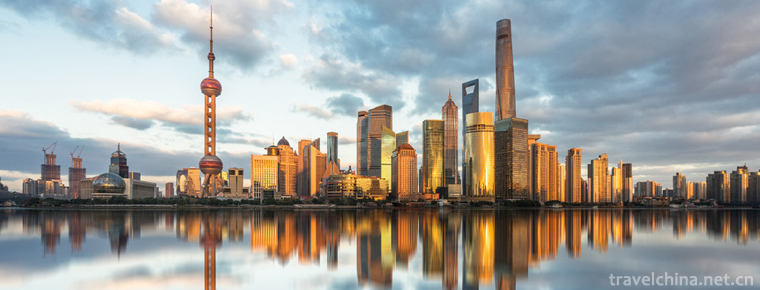
-
Portuguesestyle egg tarts
Portuguese egg tart, also known as Portuguese cream tower, caramel Mejit egg tart. Portuguese tart, known in Hong Kong, Macao and Guangdong, is a small cream pastry pie..
Views: 178 Time 2018-10-31 -
Go BelieveGoubuli baozi
Goubuli steamed bun is a snack made of flour, pork and other materials. It was founded in 1858 (Xianfeng period of the Qing Dynasty). .
Views: 163 Time 2018-11-14 -
Donglin Temple
Donglin Temple, located at the foot of Lushan Mountain, Jiujiang City, Jiangxi Province, is 16 kilometers north of Jiujiang City and 50 kilometers east of Lushan Luling Street. Because it is east of X.
Views: 124 Time 2018-12-20 -
Caogao Gong and drum in northern Sichuan
Licao Gong and drum in northern Sichuan is a kind of traditional folk music. It mainly distributes in four counties and three districts of Guangyuan City, Sichuan Province.
Views: 374 Time 2019-04-18 -
Foshan Wood Engraving New Year Pictures
Foshan woodcut New Year's picture is a famous folk New Year's picture in South China and a wonderful flower of Lingnan traditional folk culture. It is as famous as the New Year.
Views: 175 Time 2019-04-29 -
Canadian Tibetan carpet weaving skills
Canadian Tibetan carpet weaving skills, traditional handicraft in Huangzhong County, Qinghai Province, one of the national intangible cultural heritage..
Views: 103 Time 2019-05-05 -
Brow tune
Meihu Opera is a local traditional drama in Shaanxi Province. From the development of the floor stall rap and social fire, the floor stall and social fire performances always focus on singing. Its act.
Views: 160 Time 2019-06-01 -
Qixi Festival
Qixi Festival, also known as Qiqiao Festival, Qijie Festival, Daughter's Day, Qiqiao Festival, Qiniang Club, Qiaoxi Festival, Bull Bull Mother's Day and Shuangqi Festival, is a traditional Chinese fes.
Views: 243 Time 2019-06-09 -
Tajik Water Diversion Festival and Seeding Festival
In Tashkurgan Tajik Autonomous County of Xinjiang, Tajik Water Diversion Festival and Seeding Festival are Tajik agricultural festivals. In Tajik, the sowing Festival is called "Hamozivast" .
Views: 225 Time 2019-06-17 -
Chinese Cheongsam QiPao start time
When it comes to the beginning of cheongsam fashion, it is generally believed that in the period of the Republic of China in the 20th century, Mr. Zheng Yimei said that "the original women wore short clothes in the Qing Dynasty, but did not wear .
Views: 363 Time 2020-12-11 -
Deyang secondary industry
In 2018, the total industrial added value of Deyang City was 101.28 billion yuan, an increase of 9.8% over the previous year. By the end of the year, there were 1376 Industrial Enterprises above Designated Size, and the added value of industries above.
Views: 321 Time 2020-12-14 -
Dazhou highway
Dazhou is one of 179 main hubs of highway transportation in China and one of 12 regional secondary hub cities in Sichuan Province. It is a secondary logistics center city in national layout planning and an important logistics hub city in Western Chin.
Views: 212 Time 2020-12-20

